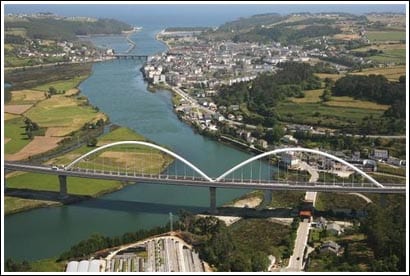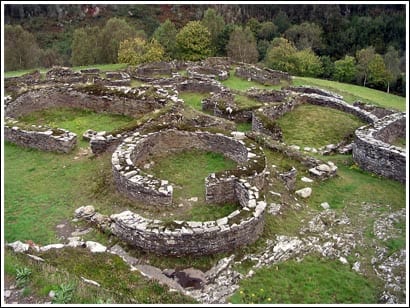
We continue in the west of Asturias and after Valdés it is the turn of Navia, a council that, like most of those in the west of the Principality, have a reputation of being mysterious and above all magical lands and that over the years their traditions, history and culture have been gradually forged to shape what Today it is one of the most beautiful corners of this Spanish province.
This council also overlooks the brave Cantabrian Sea and, like neighboring Valdés, it also has mountains dotted with forests and valleys, lands of farmers, cattle herders, artisans and famous sailors, another destination that we cannot miss on at least one occasion. .

Navia urban nucleus and its estuary seen from the air
Navia is closely linked to history, especially of Celtic roots, since in the town of Coaña We will find one of the best preserved Celtic forts in the entire Cantabrian coast, which is open to the public and over the years has become a corner worthy of our visit to learn more about the history of the ancient inhabitants of these lands. .
In this area, as in all of Asturias, its people stand out, hospitable and who know the value of a small stop on our route and who do not hesitate to give us the opportunity to learn more about the place by telling us some legends and traditional stories of the area and sometimes, if he paints, with a good bottle of cider or something to nibble on while we regain strength.

Part of the famous Castro de Coaña
The course of the Navia River marks the character of this council and is part of a spectacular environment where nature has gradually formed, as if it were the whim of an artist. Green valleys, rugged mountains, forests, slopes and endless corners await travelers, especially lovers of excursions, sports and outdoor activities.
With this we finish our fourth installment of this route through these two beautiful councils of the Principality of Asturias and little by little we will be facing the final stretch of this series dedicated to the Asturian West.